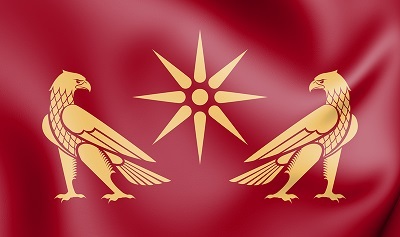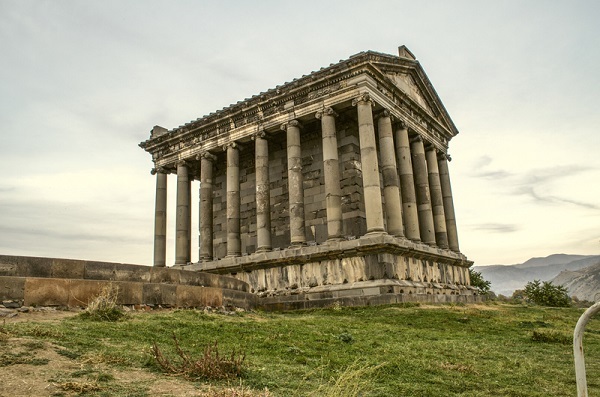

The Artaxiad dynasty ruled between 189 BCE and AD 12 in the region of Greater Armenia, some part of Mesopotamia, and Sophene.
The sources for the geographical location of the Armenian dynasty come from Greco-Roman authors. Armenia was known as greater and lesser Armenia based on their geographical locations; it resided to the southeast or northwest of the Euphrates River. Armenia was controlled by three main kingdoms: the Orontids, the Artaxiads, and the Arsacids.
The first ruler of Armenia was the Orontid, who established religious and diplomatic connections between Persia and Armenia. The dynasty struggled when Alexander won the war and brought Armenia under the Maxodian Empire while appointing Mihran, who was a commander and scion of the Orontid dynasty, to rule Armenia.
Following the death of Alexander, generals fought for pieces of his great empire. As a result, Armenia came under general Seleucid rule.
At the Battle of Magnesia in 190 BC, Seleucid was defeated by the satrap Artaxias, who named a dynasty after himself, the "Artaxiad Dynasty." He also rebelled against his Macedonian overlords.
On the other side, a satrap called Zariadres presided over a smaller Armenian state called Sophene. They overthrew the Seleucids and became rulers of their respective kingdoms, as both claimed connections to their previous Orontid dynasty.
Though there were independent cultures in Armenia, they were widely influenced by their former rulers. We could witness the customs and religions of the Persians, though the Romans were dominant geographically.
Many Armenian kings had Persian-sounding names; they followed polygyny. For example, the famous Armenian king Tigranes the younger of the Artaxiad dynasty was married to the daughter of a Parthian king.
Iranian, and specifically Zoroastrian, cultures were paramount in Armenia during this period. For example, some coins have an Achaemenid fire motif, while local deities appear with aesthetic representations of Iranian deities such as Verethragna and Mithra.
Even after they embraced Christianity in the 3rd century CE, this Persianate imagery endured in Christian art. for example, influencing scenes of nativity. A lot of this Persian continuity can be found in the strong temple aristocracy present in Armenia.
The Armenian pre-Christian religion was eclectic, borrowing from its neighbours, but it maintained a solid structure despite political upheavals. For example, deities like Tir, God of Schooling, Wisdom, and the Arts; Tsovinar, Goddess of Rain; and Anahit, Goddess of Fertility, were prominent in the empire, with large, decorated temples dedicated to them.
The gods of Armenia had Persian as well as Smectic and Hellenic analogues. For example, Nane, the daughter of the chief god Aramazd, is the mother goddess linked to Nanaya, the Babylonian goddess of love.
In Greek art, deities like Anahit and Tir were present and depicted in temples like Apollo and Aphrodite.

Image 1: Pagan Temple
Description-Detail of the stone roof with relief patterns at the pagan temple built in honour of the Sun God Mithra in the village of Garni, near Yerevan
The son of the royal dynasty born to Tigranes I and Princess Alan I was raised as a hostage in the Parthian court, where he was taught Persian warfare and etiquette. Later on, he was appointed king of Armenia by Mithridates II of the Parthian empire.
He reformed the Armenian army by giving importance to archers and horse soldiers and became a great king. He also managed to overtake Sophocles during the geopolitical strain and used this opportunity to expand his empire to the Mediterranean Sea.
The capital of his empire was Tigranocerta, a cosmopolitan metropolis with Greek and Iranian architecture. The empire grew powerful at the expense of the empires in the east. As in the west, the eagle standard of Italy was growing even stronger.
Eventually, Pompey the Great intruded upon Armenia, largely due to the aid it had provided to Rome’s enemy.A long and protracted war took place in Armenia, with major losses on both sides.
Armenians exhausted the Romans, causing mutinies among the legions. It was up to Pompey the Great to control Armenian power, as well as the rebellious son of Tigranes, Tigranes the Younger.
Tigranes the younger had the support of the Parthians. Pompey’s invasion was incredibly powerful, and by this time Tigranes was 75 years old and had become an ally of Rome, although his realm was still nominally independent despite becoming a client state.
Tigranes died in 55 BCE, and after his death, Armenia came under the control of the Romans under Tiberius.
Rome was influencing Armenia in the development of roads to enhance trade and commerce until the 1st century AD.
The arch-rivals, the Parthians, also maintained a presence in the area, and eventually, the Arsacid dynasty came into power with its first ruler, a Zoroastrian magus called Tridats I.
Artaxias 189-c.161
Artavasdes I, 161–c. 120
120-95 Tigranes I
Tigranes II, 95–55
Artavasdes II 55-34
Artaxias II 34-20
Tigranes III 20-c.8
Tigranes IV 8-1/2 CE
Artavasdes pretender
Ariobarzanes 2-c.4
Artavasdes III 4-c.6
Tigranes V and Erato 6- unknown
Artaxias III Zeno 18–c. 34
Arsaces 34-36
Mithridates 36-51
Rhadamistus 51-55
The region continued to swing between Roman and Parthian influences. The political instability of this period paved the way for many short-term rulers and the rise of Sassanians, also influenced Armenia in the short term. Following this situation, the Artaxiad dynasty was overtaken by Arsacid or Arshakuni dynasty.
Q1. Who did the consolidation of Armenian lands?
Ans. The Armenian lands were ruled by different small rulers, and Artaxias decided to unite the lands of Armenia during his reign. The accounts of his conquest were written by Strabo.
Q2. Who was the commander of the Roman army when Tigranes was defeated?
Ans. The Roman army was led by general Licinius Lucullus, when
Q3. Who was known as the philosopher king of the Artaxiad dynasty?
Ans. Tigranes II was known as the philosopher king for his literary works in Greek.